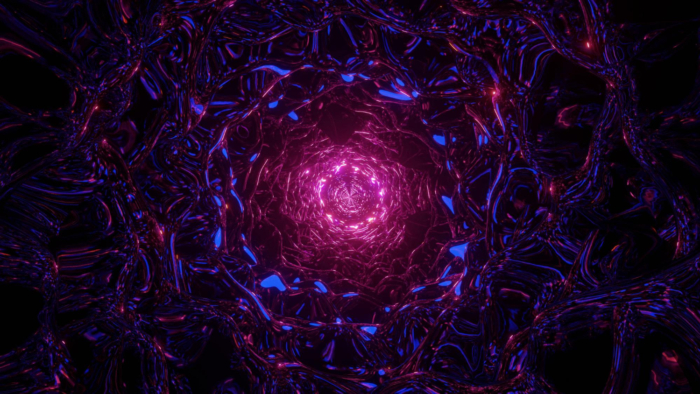Introduction: The Mysteries Beyond Our Reach
When we gaze up at the night sky, we see a tapestry of stars, galaxies, and cosmic wonders. But what if I told you that everything we see, every star, planet, and galaxy, makes up less than 5% of the entire universe? The rest is shrouded in mystery, composed of phenomena we can’t directly observe but whose presence we feel through their gravitational effects. This invisible majority is known as dark energy and dark matter. Let’s embark on a journey to explore these enigmatic components that shape our universe.
1. The Birth of Dark Matter: Historical Context
Early Observations
The story of dark matter begins in the early 20th century when astronomers noticed something peculiar about the movement of galaxies. In the 1930s, Swiss astronomer Fritz Zwicky observed that galaxies within clusters moved so quickly that they should fly apart, given the visible mass. Yet, they stayed together. Zwicky proposed the existence of an unseen mass, which he called “dunkle Materie” or dark matter.
Galactic Rotation Curves
Later, in the 1970s, American astronomer Vera Rubin studied the rotation curves of galaxies and found another anomaly. The outer regions of galaxies were rotating as fast as the inner regions, defying the expected Keplerian decline. Rubin’s work provided strong evidence that a substantial amount of invisible mass, or dark matter, was present within galaxies.
2. Understanding Dark Matter: What We Know
The Nature of Dark Matter
Dark matter doesn’t emit, absorb, or reflect light, making it invisible and detectable only through its gravitational effects. Scientists believe it makes up about 27% of the universe’s mass-energy content. While we don’t know what dark matter is made of, several candidates have been proposed, including weakly interacting massive particles (WIMPs), axions, and sterile neutrinos.
Direct and Indirect Detection Efforts
To uncover the true nature of dark matter, scientists have employed both direct and indirect detection methods. Direct detection involves searching for dark matter particles interacting with ordinary matter in highly sensitive detectors placed deep underground. Indirect detection looks for the byproducts of dark matter annihilations or decays, such as gamma rays or neutrinos, in space.
3. Dark Energy: The Force Behind Cosmic Acceleration
The Discovery of Dark Energy
In the late 1990s, astronomers studying distant supernovae made a groundbreaking discovery: the universe’s expansion is accelerating. This unexpected finding suggested that an unknown force, dubbed dark energy, is driving this acceleration. Dark energy is believed to make up about 68% of the universe’s mass-energy content, dwarfing both ordinary matter and dark matter.
The Cosmological Constant
One of the leading explanations for dark energy is the cosmological constant, a concept introduced by Albert Einstein. Initially, Einstein proposed the cosmological constant to counterbalance the gravitational pull and achieve a static universe. When the universe was discovered to be expanding, he abandoned the idea, calling it his “biggest blunder.” However, with the discovery of cosmic acceleration, the cosmological constant has resurfaced as a possible explanation for dark energy.
4. The Role of Dark Matter in Cosmic Structure Formation
The Cosmic Web
Dark matter is crucial for the formation of cosmic structures. After the Big Bang, slight density fluctuations in the dark matter provided the seeds for the growth of structures. Over time, these fluctuations grew under gravity, leading to the formation of the cosmic web—a vast network of filaments and clusters of galaxies.
Galaxy Formation and Dark Matter Halos
Galaxies form within large, invisible structures called dark matter halos. These halos, composed of dark matter, provide the gravitational scaffold for galaxies to form and evolve. Without dark matter, galaxies as we know them wouldn’t exist, as ordinary matter alone wouldn’t be enough to create the necessary gravitational pull.
5. Dark Energy’s Impact on the Fate of the Universe
The Expanding Universe
Dark energy’s repulsive force is causing the universe to expand at an accelerating rate. This acceleration has profound implications for the fate of the universe. If dark energy continues to dominate, it could lead to a scenario known as the “Big Freeze,” where galaxies drift apart, stars burn out, and the universe becomes a cold, dark, and lifeless place.
Alternative Scenarios
While the Big Freeze is one possible outcome, other scenarios include the “Big Rip,” where dark energy’s repulsive force becomes so strong that it tears apart galaxies, stars, and even atoms. Alternatively, if dark energy changes over time, it could lead to a “Big Crunch,” where the universe’s expansion halts and reverses, causing it to collapse back into a hot, dense state.
6. The Quest for Dark Matter: Experimental Approaches
Collider Experiments
Particle colliders, like the Large Hadron Collider (LHC) at CERN, are at the forefront of the search for dark matter. By smashing particles together at high energies, scientists hope to create dark matter particles or detect their effects. These experiments aim to uncover new physics beyond the Standard Model, potentially revealing the nature of dark matter.
Space-Based Observations
In addition to ground-based experiments, space telescopes like the Fermi Gamma-ray Space Telescope and the Alpha Magnetic Spectrometer (AMS) are searching for signals of dark matter interactions. These instruments look for excess gamma rays, positrons, or other particles that could indicate dark matter annihilations or decays in space.
7. Theoretical Models of Dark Energy
Quintessence
One alternative to the cosmological constant is quintessence, a dynamic field that changes over time and space. Unlike the cosmological constant, which has a constant energy density, quintessence’s energy density can evolve, potentially leading to different future scenarios for the universe’s expansion.
Modified Gravity Theories
Another approach to explaining dark energy involves modifying our understanding of gravity. Theories like f(R) gravity and scalar-tensor theories propose changes to General Relativity on cosmic scales. These modifications aim to account for the observed acceleration without invoking an unknown energy component.
8. The Interplay Between Dark Matter and Dark Energy
Cosmic Coincidence Problem
One of the intriguing questions in cosmology is why the densities of dark matter and dark energy are of the same order of magnitude today, despite evolving differently over time. This “cosmic coincidence” has led to various theoretical speculations about possible connections or interactions between dark matter and dark energy.
Coupled Dark Sector Models
Some models propose that dark matter and dark energy interact directly, forming a coupled dark sector. These interactions could lead to observable effects, such as changes in the growth rate of cosmic structures or variations in the dark energy equation of state. Studying these models could provide new insights into the nature of the dark universe.
9. The Role of Dark Matter in Galaxy Dynamics
Gravitational Lensing
Dark matter’s presence can be detected through gravitational lensing, where light from distant objects is bent by the gravitational field of dark matter. This bending creates distorted or multiple images of background galaxies, allowing astronomers to map the distribution of dark matter in galaxy clusters and beyond.
Bullet Cluster Evidence
One of the most compelling pieces of evidence for dark matter comes from the Bullet Cluster, a system of two colliding galaxy clusters. Observations show that the hot gas, which constitutes most of the visible mass, is separated from the bulk of the mass inferred from gravitational lensing. This separation strongly supports the existence of dark matter, as it behaves differently from ordinary matter during collisions.
10. Dark Energy and Cosmic Microwave Background
Imprints on the CMB
The Cosmic Microwave Background (CMB) radiation, the afterglow of the Big Bang, provides a snapshot of the early universe. Dark energy leaves imprints on the CMB by influencing the growth of cosmic structures and the expansion rate of the universe. By studying the CMB, scientists can gain insights into the properties of dark energy.
Planck Satellite Discoveries
The Planck satellite, launched by the European Space Agency, has provided high-precision measurements of the CMB. These measurements have helped refine our understanding of the universe’s composition, including the proportions of dark energy and dark matter. Planck’s data continues to be a cornerstone for cosmological research.
11. Future Prospects: Next-Generation Experiments and Observatories
Upcoming Missions
The quest to understand dark energy and dark matter is far from over. Upcoming missions like the European Space Agency’s Euclid satellite and NASA’s Wide-Field Infrared Survey Telescope (WFIRST) aim to map the distribution of dark matter and study the properties of dark energy with unprecedented precision. These missions will provide valuable data to test existing theories and develop new ones.
Ground-Based Observatories
Ground-based observatories like the Vera C. Rubin Observatory, previously known as the Large Synoptic Survey Telescope (LSST), will conduct wide-field surveys of the sky, capturing billions of galaxies. These surveys will enhance our understanding of dark matter distribution and the effects of dark energy on cosmic structures.
Conclusion: Embracing the Unknown
Dark energy and dark matter represent the frontier of our knowledge about the universe. They challenge our understanding of fundamental physics and cosmology, pushing us to develop new theories and technologies. As we continue to explore these mysterious components, we get closer to unraveling the secrets of the universe. The journey is as exciting as the destination, promising new discoveries and a deeper understanding of the cosmos.
Dark energy and dark matter shape the universe in ways that challenge our understanding and imagination. From the historical observations that hinted at their existence to the sophisticated experiments and theories developed today, the quest to understand these mysterious components continues to drive scientific inquiry. As we look to the future with new missions and observatories, we stand on the brink of uncovering the true nature of the universe.


Your article helped me a lot, is there any more related content? Thanks! https://www.binance.info/sl/register?ref=I3OM7SCZ
291lodi is pretty cool. Easy to use and has a bunch of games to choose from. Definitely worth checking out if you’re trying your luck. Visit them at 291lodi
JJwinwin, my lucky charm? Maybe! I’ve had some decent wins so I’m sticking around. See for yourself jjwinwin.